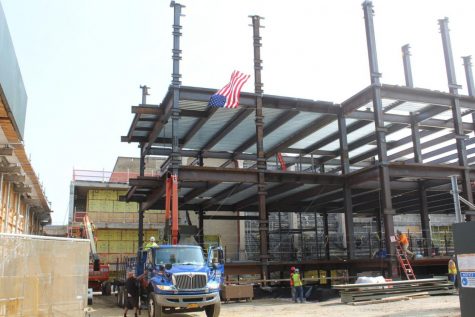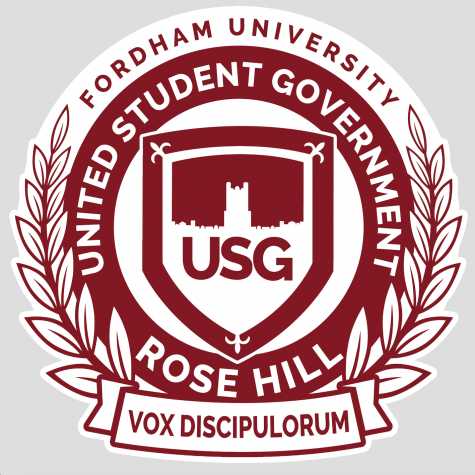Fordham Freshmen More Likely To Protest
March 30, 2016

By Theresa Schliep
As Generation Y matures from Nickelodeon watching, Nintendo playing school children to young adults enrolled in higher education, some predict that student protests will become more prevalent on college campuses. Specifically, University of California at Los Angeles’ Higher Education Research Institute survey found that the greatest amount of students in the history of their annual survey anticipate participating in protests.
This survey, called “The American Freshman”, encompassed 199 schools. It found that 8.5 percent of college freshmen in 2015 expressed a “very good chance” that they would participate in protests. This is an increase from the 2014 survey, which showed that 5.6 percent of college freshman expressed the same chance.
The survey notes that participation in protests varies depending on race. While 7.1 percent of white students expressed interest in protest, 16 percent of black students expressed the same interest.
In the past academic year, Fordham University has been the site of various protests. Fordham Students United held a “Black Students Matter” poster at a basketball game after a series of racially charged incidents in the residence halls. The club also held a speak out on Nov. 18 in response to protests related to race on the University of Missouri campus.
Dr. Mark Naison, African-American Studies and History professor at Fordham University and Director of Fordham’s Urban Studies Program, said that student engagement at the university reflects this trend.
“It would be hard for these students to be more involved in protest,” Naison said.
Additionally, Naison says that demonstrations at Fordham are reflections of the national climate.
“The combination of Occupy Wall Street, Black Lives Matter, the racial incidents and the hovering danger that people feel from the Donald Trump campaign have made students alert,” said Naison.
For example, Fordham Students United hosted a teach-in in support of Sodexo employees in the wake of the Request for Proposals Process. Potential vendors are not required to maintain the current union contract, though Fordham will not make a contract with a non-unionized provider, nor abide by Fordham’s standards for fair and equal employment.
The university also has encouraged potential food vendors to maintain employership of employees in good standing.
“All of the potential vendors also understand the nature, mission and values of the Fordham University community,” said Vice President Grey in an email.
Naison said that the university community will respond if workers lose their pensions, benefits or employment.
“If the workers rights are in any way violated, there will be major protests and demonstrations,” said Naison. “I think you’ll see marches and possibly civil disobedience.”
The professor said that neither controversies at the university, nor demonstrations in response to the university, are unique to Fordham.
Christopher Rodgers, dean of students, guaranteed students the right to approved protest. The university has some policies on demonstration. For instance, protests, sit-ins and the like must obtain approval from student affairs.
“The right to freely express oneself is crucial here at Fordham,” said Dean Rodgers. “This is partly why the Deans of Students have never turned down a request to use campus space for a protest based on viewpoint.”
Dean Rodgers said that approving demonstrations is a way to respect other functions at the university.
“By coordinating with the Dean’s staff on demonstrations much as they do with other events, organizers signal that they respect others in exercising their own rights: the right to go to class, teach, get to jobs, deliver items on campus, to study, to worship or even to express disagreement,” said Dean Rodgers.
The university has a history of protest and civic engagement, detailed in the novel “Fordham: A History and Memoir, Revised Edition” by Raymond A. Schroth, S.J.
In December 1968, students formed a group called the Coalition for a Restructured University and the Society for Afro-American Advancement at Fordham (SAAAF). Seventeen members of SAAAF burst into an administrator’s office and held administrator Martin Meade for two and a half hours in his office. They demanded that he reject a government rule that SAAAF argued. The rule discriminated against black and poor students because it “allowed universities to deny financial aid to students who participated in campus disturbances.”
In Spring 1970, students set a part of the McGinley Center on fire following the invasion of Cambodia.
Naison said that student and faculty demonstration in 1969 by Students for a Democratic Society and the Black Student Alliance resulted in the creation of the Institute of Afro American studies, which later evolved into the department of African and African American studies.












Fordham students should protest and ask just where the tuition money actually gets spent. Enough social justice being broadcast everywhere http://news.fordham.edu/fordham-magazine/the-social-justice-path-recent-graduates-work-to-reduce-poverty-and-improve-mental-health-as-jesuit-volunteers/ . It is a university not a seminary, we don’t need brain washed.